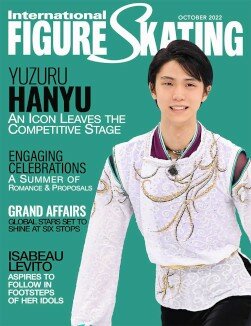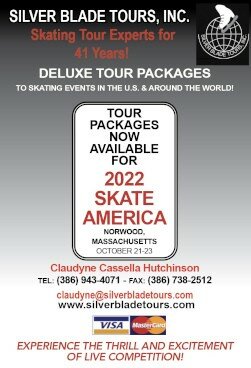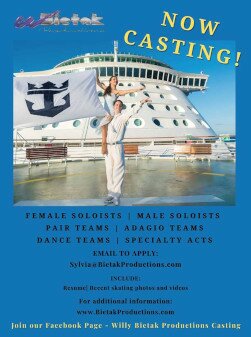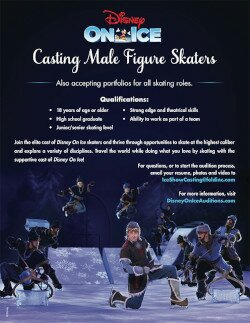

Photo: Tatjana Flade
Русскую версию интервью можете прочитать здесь
Considered by many to be one of the most talented skaters of the current era, a rejuvenated Mikhail Kolyada opened this season by scoring two victories in late October.
Having missed the entire 2019-2020 campaign as he dealt with a sinusitis issue that eventually required surgery, the 25-year-old was happy to return to training in January 2020. Two months later, the COVID-19 pandemic struck and the rinks in Russia were ordered closed. In June, Kolyada switched coaches, moving to train with Alexei Mishin. He laid down impressive performances at the Russian test skates in September, and a month later went on to win his first two competitions: Stage III of the Russian Cup in Sochi and Ice Star in Minsk, Belarus a week later.
In late October you had back-to-back competitions in Sochi and Minsk. How was that for you?
To be honest, I don’t remember that I ever did that before. It is unusual for me to do two competitions back to back. I wanted to test myself, but I did not know what effect that situation would have. It was very interesting. If you are directly on the ice, do your jumps, spins and steps, you don’t think about being tired. You are absorbed in what you are doing.
These were your first real competitions since the 2019 World Championships. What did it feel like to be back competing?
It was great! I had really missed that adrenaline, the competitive atmosphere. It was awesome and I loved everything about it.
How do you feel about your performances in Minsk?
Everything worked out in the short and went smoothly. There were some mistakes in the free, but I am happy that I did not pop any jumps. As Alexei Mishin (his coach) said, “mistakes are good” because if there are no mistakes, you start to relax inside and you stop progressing. When there are mistakes, it is motivating.
In practice and during the 6-minute warm up for the short in Minsk not everything was working. But you were able to put out a clean performance. How encouraging was that?
As always I went out and tried my best. I don’t even know how to comment on that. We are working hard and honestly. I am this kind of person – what works in practice works in competition. Well, maybe the free skate was a bit worse than in practice.
There are people that are ‘plus start’ — meaning nothing works in practice, but they go out, pull themselves together and do it (in competition). I am not like that. In my opinion, a practice just before the competition does not really decide anything because the foundation is laid at home. Your work at home is what you take to competition.
In the free skate in Minsk you started well, but then some jumps were shaky.
I know what the problem was, but I do not want to talk about it now. I am analyzing it myself, drawing my conclusions and fixing my mistakes. Looking at the competition in Sochi — there the second triple Axel in the free skate did not work. In Minsk it did. Maybe it was not ideal, but I did it.
I saw a video clip of you landing a quad Lutz-triple toe combination in practice. How is that jump coming along?
It is working out step by step. I really want to show it in competition. I have missed it. A lot of things have changed for me; there were many events in a relatively short time and it was a very complete time. I realize that — if I may say so — I am not getting younger and I want to realize everything 100 percent very quickly. Therefore, I want to do the quad Lutz.
Alexei Mishin told me in an interview that his experience has taught him not to rush anything.
I completely agree with him. However, our situation demands that we show the maximum best work in the maximum short time.
This is a very unusual season. How do you deal with the uncertainty that competitions could be cancelled at short notice?
I am preparing as I always do. If I know there is a competition and I am preparing for it, and then it is cancelled tomorrow … we will decide tomorrow how to deal with it, how to prepare further and for what. So far we have a certain plan and we are sticking to it.
How do you feel your programs are developing?
That is a difficult question. I am feeling somehow that we are making progress, but I don’t see myself from the outside and I can rely only on what people around me are saying. If they say the programs are growing each time, then it is probably the case. My emotions are changing. I won’t even delve into that but I am just saying that they are changing.
Can you tell us about your visit to the ballet museum in St. Petersburg and meeting with the ballet star, Nikolai Tsiskaridze.
That happened very suddenly. I went to practice and Alexei said ‘next week we’re going to the Vaganovskaia Academy’ (a famous Russian ballet school). I did not think about it again but the following week after training I got a call at home and was told to “come over here, ASAP.” Half an hour later I was there.
The history of Russian ballet is very rich and there is a story to see and tell in his museum. Too bad the history of figure skating is not as extensive. We have a (figure skating) museum in Novogorsk where there are much less exhibits. In the ballet museum there are photos, costumes, notes, letters — a lot of things. Nikolai told me everything about Nureyev and what kind of person he was. He told me his story and I really enjoyed it. I felt very inspired when I left. It was great!
What can you bring from that experience to your program?
In an old Soviet movie they say “I am not a magician, I am just learning.” I am not coming from the world of ballet, but I am learning nevertheless. It was very useful for me and the next day in practice I felt an emotional high.
Let’s talk about your costumes for this season.
Maria Evstigneeva created both costumes. It was a whole epic story with these costumes! Everything was excellent with the one for the short program. She sent a sketch and we agreed upon it. At first, the pants were black but Alexei said they had to be blue – so they were made blue.
We still have some unsolved questions about the long program costume though. We tried to skate with long and then with three-quarter sleeves. Since the rink in Minsk was cold, I said right away that I would skate with long sleeves. Alexei is still looking at ideas for the costume and maybe we will realize them in the future.
My costume is not similar to Nureyev’s costumes. He had costumes with a certain chic – they were bright so they caught the eye right away. The upper part was very short and this made his legs look longer.
The specifics of a ballet costume are a bit different from a skating costume. I don’t think broad shoulders look good on me. Ballet dancers have really open collars and that emphasizes the shoulders. At least some of Nureyev’s costumes that were shown to us were like that. And I won’t wear white. If the upper part and the pants are white maybe it looks good in the scene at the Bolshoi Theatre, but it doesn’t work on the ice because it all merges with the bright light and the white ice. If the costume is white no one will see you.
The current long program costume is very elegant with no distractions.
Yes, because the emphasis is not on the costume, but on the program. I actually have a second costume that is ready. I skated in it in practice but Alexei said no, we would need to do something else. It has black pants and a black top. I feel very comfortable in it and I really like it. One part is close fitting and one part is loose fitting, and it t has a collar, which is a nice addition. However, from a distance of 10 meters it just looks like a black practice outfit. It lacks ethereality, romanticism.
I personally think your costume looks better with the shorter sleeves.
I think I will use the shorter sleeves in Moscow (at Rostelecom Cup).
Perhaps you can have something in the design of the black costume, but with the colors of this costume?
Yes, I have the feeling that I will go back more than once to the design studio.
Do you have input into your costumes?
I suggested for the short program that I wanted a jacket. That really suits the theme of the program. A jacket was made and Maria came for the first or second fitting to the rink. She had not cut the jacket out yet and Alexei said that we would leave it that way — it will not get any shorter, but will remain long. It is very comfortable. I put on my costume and I am in character and into the mood right away.
There are two branches of acting schools — the Stanislavski and the Chekhov method. According to the Stanislavski method, you need to sit down and imagine and then project it. The Chekhov system is different. There, the costume, the light and the stage props need to be right before you get into the role. These are two opposed systems: One comes from the inside — the person who delves into the role himself and is reading the text — and the other who watches movies, imagines everything, takes it in and then gives out the emotions. The other system is the opposite; you start with the outside factors. This suits me better. I feel it better this way.
I have a friend in Canada in the fashion industry who said your costumes are very well done.
Thank you. You need to listen to professionals. You need to be a professional in your own area because you cannot be a pro everywhere. You cannot fly an airplane as a professional pilot and be a professional figure skater at the same time.
RELATED CONTENT:
2020 CUP OF RUSSIA SERIES
2020 ROSTELECOM CUP




